Xochipilli: Aztec God Of Love, Music, Song And Ecstatic Mushroom Trance
A. Sutherland - AncientPages.com - Among the main sculptures that have come to us from the ancient Nahuatl culture is Xochipilli, the 'Lord of Flowers'.
Scholars believe that the figure of this deity was carved about one generation before the arrival of Spaniards.
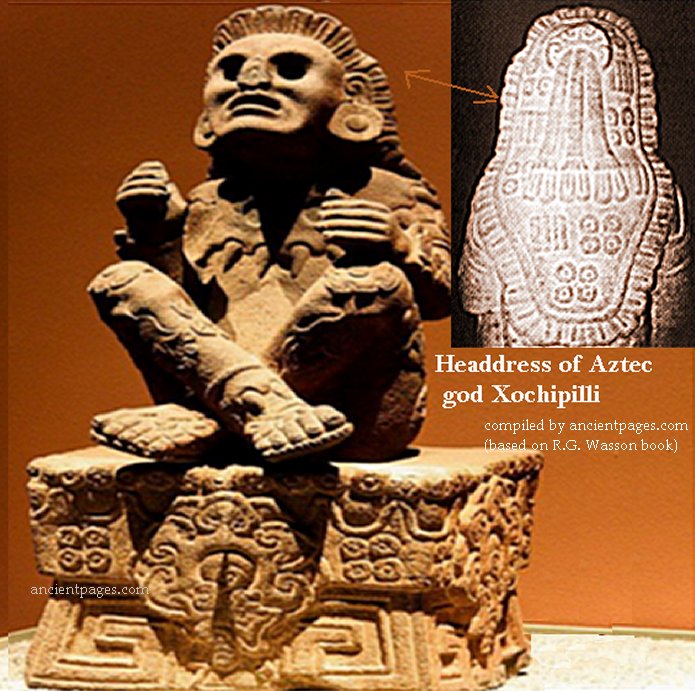
Xochipilli - Aztec God of Flowers, Dance, Song, Love – statue from Art. Museo Nacional de Antropologia,Mexico City.
Xochipilli’s name contains the Nahuatl words xochitl ("flower") and pilli (either "prince" or "child"), and therefore means "flower prince". He is also referred to as Macuilxochitl, which means "five flowers".
Discovery of a remarkable statue
In the mid-1800s, an impressive statue of Xochipilli, carved in stone, was unearthed on the western slopes of the volcanoes Popocatepetl and Iztaccihuatl near Tlalmanalco, south-eastern Mexico. The statue is now housed in the Museum of Anthropology and History of Mexico City.
The statue of Xochipilli is 79 cm high and carved in stone. It represents an extraordinary work of art and depicts Xochipilli, the “god of flowers” who is related to a number of pleasurable activities such as dance, song, music, love, feasting, painting, writing, and song.
The deity is sitting on a temple-like granite base, about 43 cm high and 60 cm per side. His body – in an ecstatic visionary trance - is adorned with sacred flowers (psychotropic plants) and other garments that richly decorate a beautifully carved, basalt temple platform.
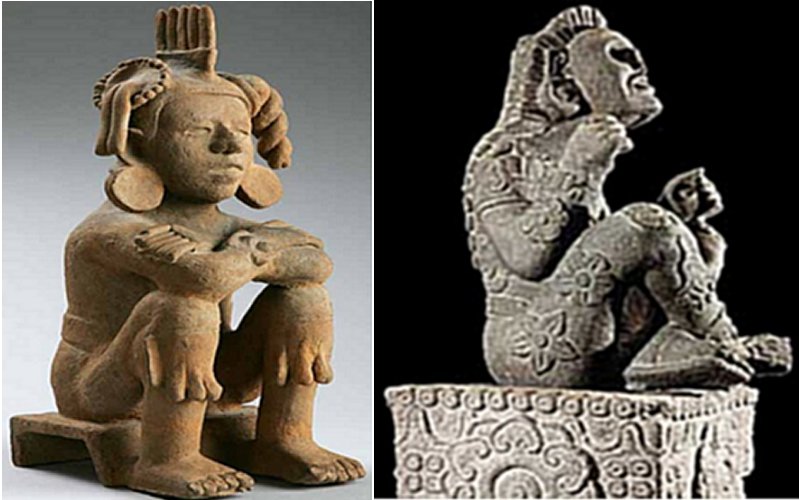
Left: Xochipilli, Aztec terracotta, Lombards Museum; Right: Xochipilli covered with “flowers”. Museo Nacional de Antropologia Mexico
It is widely known that the Aztecs possessed advanced knowledge of hallucinogenic plants, which are known to have been used in sacred rituals of this culture.
Sacred mushrooms and flower plants but not quite ordinary ones
In his book “The Wondrous Mushroom - Mycolatry in Mesoamerica”, Robert Gordon Wasson (1898 –1986), an American author and ethnomycologist, describes Xochipilli, the deity of ecstatic mushroom trance. The deity is totally absorbed in temicxoch, 'the flowery dream' state that follows the ingestion of hallucinogenic plants.
He "wears a mask with hollowed-out eyes, his face lifted upward with a fixed gaze. This is a depiction of a man in ecstatic trance. His feet are crossed, toes curled, hands held lightly above the knees at the level of the heart. All around the base of the figurine as well as on his body are images of various flowers, including the hallucinogenic morning glory (ololiuhqui), and mushrooms in profile…"
The “flowers”, however, are not the ordinary ones but rather botanically unspecified plants, frequently mentioned in Nahuatl poetry and as Wasson explains for the Nahua poets and singers, "flowers" and "flowering" or "dream flowers" referred to the visionary experience induced by teonanacátl mushrooms.
Wasson, with the advice of Richard Evans Schultes, director of the Harvard botanical museum, identified the “flowers” that Xochipilli has on his body. Surprisingly, they are not any ordinary plants but species that contain psychoactive substances; they are so-called “dream flowers” or Temicxoch. The divine Xochipilli, writes Gordon Wasson, is absorbed in Temicxoch; he is in ecstasy.
"The flowers took them to another world . . . a world that they called their Tlalocan, a world of strange and wondrous beauty, where they reveled in sensations beyond imagining," writes Wasson.
As we mentioned earlier, Xochipilli symbolizes song and dance, games, love and flowers, maize and beauty. He was also highly respected as the protector of mushrooms, especially earlier mentioned “teonanacátl mushrooms”. This unusual Psilocybin sponge only grows in a small region of Mexico at 3300 - 3700 meters above sea level on the volcano Popocatepetl (where the statue of Xochipilli was found).
As one of the fertility gods, he was a deity linked with agriculture and the cultivation of staple crops such as maize. Many archeologists believe he was first worshipped during the years of the Teotihuacan civilization but was later adopted by the Aztecs.
This kind of mushroom is also known as the “sacred mushroom of visions” and its name teonanacátl means "divine flesh" (or "divine flesh"). It certainly gives us an idea of how important and respected this mushroom was by the Aztecs.
Xochipilli was particularly worshiped at Xochimilco, built in the 16th century by the Spanish on the ruins of Tenochtitlan, the old Aztec capital, Mexico City. The most common offering to this god was pulque, the alcoholic beverage, and corn.
Written by – A. Sutherland AncientPages.com Staff Writer
Copyright © AncientPages.com All rights reserved. This material may not be published, broadcast, rewritten or redistributed in whole or part without the express written permission of AncientPages.com
Expand for referencesMore From Ancient Pages
-
 1,800-Year-Old Roman Winepress Found Near Roman Fort At Gonio (Apsaros), Georgia
Archaeology | Nov 23, 2022
1,800-Year-Old Roman Winepress Found Near Roman Fort At Gonio (Apsaros), Georgia
Archaeology | Nov 23, 2022 -
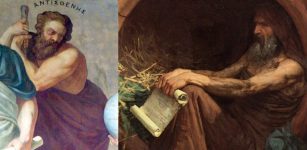 Antisthenes And Diogenes – Founders Of Cynicism Were Ancient Greek Philosophers
Ancient History Facts | Jan 7, 2018
Antisthenes And Diogenes – Founders Of Cynicism Were Ancient Greek Philosophers
Ancient History Facts | Jan 7, 2018 -
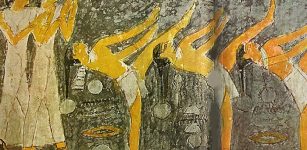 How Important Was Dance In Ancient Egypt And What Purpose Did It Serve?
Ancient History Facts | May 5, 2021
How Important Was Dance In Ancient Egypt And What Purpose Did It Serve?
Ancient History Facts | May 5, 2021 -
 Phurba Dagger: Magical Weapon That Restrains Evil And Harmful Occult Forces
Artifacts | Mar 16, 2019
Phurba Dagger: Magical Weapon That Restrains Evil And Harmful Occult Forces
Artifacts | Mar 16, 2019 -
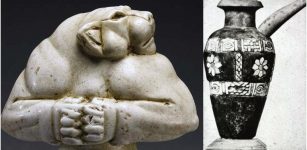 Mesopotamian City Jemdet Nasr Dated To 3100–2900 BC: Sophisticated Irrigation Techniques And Earliest Cylinder Seals
Featured Stories | Dec 18, 2016
Mesopotamian City Jemdet Nasr Dated To 3100–2900 BC: Sophisticated Irrigation Techniques And Earliest Cylinder Seals
Featured Stories | Dec 18, 2016 -
 Sōhei And Yamabushi: Fearsome Ancient Warrior Monks Of Japan
Featured Stories | Feb 26, 2022
Sōhei And Yamabushi: Fearsome Ancient Warrior Monks Of Japan
Featured Stories | Feb 26, 2022 -
 Evidence Mendel Discovered The Laws Of Inheritance Decades Ahead Of His Time
Archaeology | Jul 12, 2022
Evidence Mendel Discovered The Laws Of Inheritance Decades Ahead Of His Time
Archaeology | Jul 12, 2022 -
 Unsolved Mystery Of The Huldremose Woman: One Of The Best Preserved Bog Bodies Ever Found
Civilizations | Jan 9, 2017
Unsolved Mystery Of The Huldremose Woman: One Of The Best Preserved Bog Bodies Ever Found
Civilizations | Jan 9, 2017 -
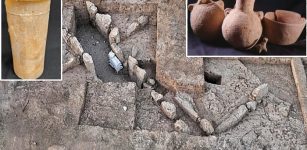 Ancient 5,500-Year-Old Gate Was Discovered Recently At Tell Erani, Near The Kiryat Gat Industrial Zone, Israel
Archaeology | Aug 17, 2023
Ancient 5,500-Year-Old Gate Was Discovered Recently At Tell Erani, Near The Kiryat Gat Industrial Zone, Israel
Archaeology | Aug 17, 2023 -
 Legendary Pirate Black Sam And His Ship Discovered Off The Coast Of Cape Cod
Archaeology | Feb 12, 2018
Legendary Pirate Black Sam And His Ship Discovered Off The Coast Of Cape Cod
Archaeology | Feb 12, 2018 -
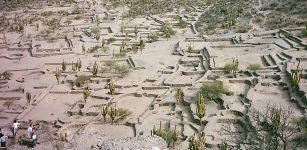 Ancient Ruins Of Quilmes: Largest Pre-Colombian Settlement In Argentina
Featured Stories | Mar 28, 2019
Ancient Ruins Of Quilmes: Largest Pre-Colombian Settlement In Argentina
Featured Stories | Mar 28, 2019 -
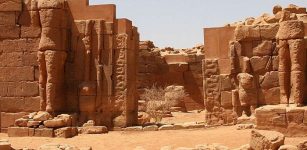 Kingdom Of Nubia: Pyramids And Priceless Secrets Of A Civilization Forgotten Long Time Ago
Civilizations | Feb 13, 2018
Kingdom Of Nubia: Pyramids And Priceless Secrets Of A Civilization Forgotten Long Time Ago
Civilizations | Feb 13, 2018 -
 Lost Q Source Remains An Unsolved Biblical Mystery
Biblical Mysteries | May 7, 2017
Lost Q Source Remains An Unsolved Biblical Mystery
Biblical Mysteries | May 7, 2017 -
 Perperikon – Ancient Secrets Of Bulgaria’s ‘Machu Picchu’ And Europe’s Largest Megalithic Sanctuary
Featured Stories | May 3, 2017
Perperikon – Ancient Secrets Of Bulgaria’s ‘Machu Picchu’ And Europe’s Largest Megalithic Sanctuary
Featured Stories | May 3, 2017 -
 More Than 27,000 Artifacts Illegally Collected By ‘Expert In Archaeology’ – Seized In France
Artifacts | Dec 18, 2020
More Than 27,000 Artifacts Illegally Collected By ‘Expert In Archaeology’ – Seized In France
Artifacts | Dec 18, 2020 -
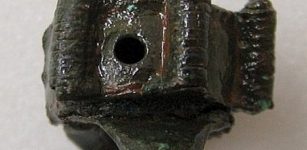 Bizarre Old Ring With License To Kill
Artifacts | Jun 29, 2014
Bizarre Old Ring With License To Kill
Artifacts | Jun 29, 2014 -
 Trolls – Fascinating Mythical Creatures Of Scandinavia
Featured Stories | Jun 13, 2022
Trolls – Fascinating Mythical Creatures Of Scandinavia
Featured Stories | Jun 13, 2022 -
 Scientists Decipher 2,300-Year-Old Chemistry Formulas Revealing Ancient Metallurgy Was More Complex Than Previosuly Thought
Ancient Technology | Aug 10, 2022
Scientists Decipher 2,300-Year-Old Chemistry Formulas Revealing Ancient Metallurgy Was More Complex Than Previosuly Thought
Ancient Technology | Aug 10, 2022 -
 Whose Ancient Burials Are Hidden Inside The Vatican City’s Walls?
Archaeology | Mar 11, 2021
Whose Ancient Burials Are Hidden Inside The Vatican City’s Walls?
Archaeology | Mar 11, 2021 -
 Largest Figurine Workshop Yet Discovered In The Maya World
Archaeology | Apr 30, 2019
Largest Figurine Workshop Yet Discovered In The Maya World
Archaeology | Apr 30, 2019
